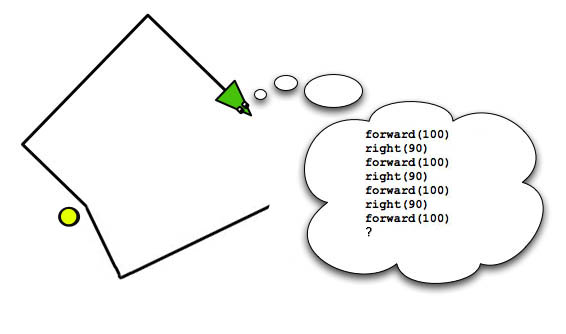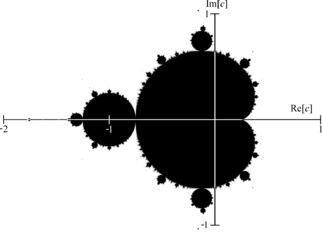Over the years I have supervised and mentored several PhD students, and recently our firm started to award scholarships to undergrads, and I was asked to support one such scholar. These scholars are from the best and brightest and so I got to thinking…
Graduates today have it tough, competition is tough, people work longer and harder than ever and stress is hitting us earlier and earlier in life – or so it seems. I would argue that, to some real extent, things have always been getting worse, and therefore by induction, we can prove that they have haven’t really changed at all.
No, the graduates of today have unparalleled opportunity to learn, to travel and to experience. The brightest graduates have the world at their feet and will be its commanders when we are are all retired and done for.
So what could I do to support this scholar? In the end it was easy – I asked myself – what do I know now that I wish I had known sooner? Most of this is in attitudes and is deep in my psychology, and is the result of direct experience – but it turns out that a healthy chunk of my scientific learning experience can be re-lived – by reading some of the books I think steered my course.
So I made a point to summarize some of the best science related books I have read (and some of the most useful internet resources I have found), and dumped the list complete with hyper-links in an email to the scholar. I hope she goes on to be president!
Now having gone to the effort, it would be a crime to keep this email secret, so here it is, (almost) verbatim!
================
As promised, here is a list of useful resources I wish I had known about when I was an undergrad. I am glad I got round to this, it should be useful for several other students I work with, and has also led to me revisiting a few things! I think I may brush it up and pop in on my blog if you don’t mind…obviously I won’t mention you!
Anyway, back to the business. To me, science is not all about chemistry, molecules, atoms, valence electrons and so on. To me, is is the process of trying to understand the world, and this set of materials I have hand picked, should you get through even a part of it, will not only educate but inspire.
This may not be the very best list, and I am sure there are many great books I have not read, but I have stuck with ones that I have, so you will have to rely on other people for further recommendations.
Jarrod’s reading list: science/psychology/economics & so on
- I’ll start with something really easy, relevant and engaging – an excellent (if quirky) summary of material science: The New Science of Strong Materials – Prof Gordon has written another on Structures that is also worth reading.
- Ok, this next one is not a book, but a paper; I like it because it shows that many stuffy professors are wrong when they prescribe boring scientific prose for papers. This paper uses the criminal “us” and “we” and discusses subjects as if with a friend. Shocking form, especially for a junior scientist. This paper by an unknown, changed the world.
- “Guns, Germs and Steel” – this is large-scale scientific thinking at its best- the book looks at how we can explain why the world is the way it is (especially the inequality) by looking at how technology spreads through societies.
- “Mistakes were made…but not by me” – this is required reading if you want to work with other people, so its basically for everyone then…
- Then to take it to the next level – “How the mind works…” – Stephen Pinker‘s other books are also good if you like this one.
- “Flatland”, (full text here) was written in 1884, and is essential reading because it defines the cliche “thinking outside of the box”.
- To make your upcoming economics courses more interesting, first read this easy-to-read popular book: “The Undercover Economist“.
- Also, Freakonomics– it’s shameless self promotion by egotistical authors, but hell they are smart, so put up with it.
- The Tipping Point – Malcolm Gladwell is a current thinker I really like; he’s not satisfied to focus on one thing for very long – his other books are on totally different stuff, but are equally thought provoking.
- “The selfish gene” – Obviously I would firstly recommend “On the Origin of Species”, (full text here) but if you are short of time (which you should be as an undergrad), you can learn most of the basics, and also get updated (well up to the 1970’s at any rate) by reading Dawkins’ classic.
- I couldn’t ignore statistics, so I will include two – one classic, “How to Lie with Statistics” and a more modern one “Reckoning with Risk“, they are quite different, but either will get the important points across.
Alas, books are perhaps becoming obsolete, so I better include some other media:-
- The first one is so good I can’t believe its free – try watch at least one a week, but the odd binge is essential too. http://www.ted.com/
- Next, an excellent physics recap (or primer) – but you need lots of time (or a long commute!) to get through this lot – look on the left menu for Podacts/Webcasts on this webpage: http://muller.lbl.gov/teaching/physics10/pffp.html – I cannot begin to praise the worthwhileness of this enough. It used to be called “Physics for future presidents” because it teaches you enough to understand the risks of nuclear energy, and the likelihood that we will all run our cars on water – and let you know when you are being duped or dazzled by big words.
- When I was somewhat younger there was a TV show called Cosmos, hosted by Carl Sagan, you may know of it. You could watch in now here, though obviously it is dated, so perhaps you shouldn’t; the reason I mention it, is because it was key in creating a generation of scientists, people who were inspired by Carl to be inspired by the universe. The previous generation had the space race and the moon landings to inspire them, but since then science has been on a downhill, with 3-mile island, global warming, etc, etc, and we have had no more Carl Sagans to cheer for us; Cosmos was a rare bit of resistance in the decline of the importance of science in society. You may also know that there have been battles in society (well in the circles on intelligentsia at any rate) about science – on the one had the ‘two cultures debate‘ and more recently, the ‘anti-science’ movement (suggested in books like “The Republican War on Science“. I do not wish to indoctrinate you, but rather make you aware that being a scientist used to be cooler and used to be more respected and something is indeed rotten in the state of Denmark.
- Getting back on track, here is an excellent guide to critical thinking (something else sadly lacking in the world) – don’t read it, listen to the podcast versions (also on itunes):
“A Magical Journey through the Land of Logical Fallacies” – Part 1 and Part 2
I think this should be taught in school. Brian Dunning’s other Skeptoid podcasts put these lessons into practice showing how a scientific approach can debunk an awful lot of the nonsense that is out there (alternative medicine, water dowsers, fortune tellers, ghost hunters, etc etc). - If you do happen to have any time left, which I doubt, there are several other podcasts on critical thinking – that use a scientific approach to look at the world and current affairs: –
- http://www.radiolab.org/
- http://www.theskepticsguide.org/
- http://blogs.discovermagazine.com/badastronomy/
- I could give more that are less mainstream, but then I would be indoctrinating you!
=============
Postscipt – Dear readers, please feel free to append your own recommendations to my letter in the comments section below. If there is one thing I know well, and that’s how little I know. I feel I only started to read ‘the good stuff’ far too late in life, and so those with more years than me (or better mentors), please do share. But bear in mind, this is principally a science oriented list, and is meant to be accessible to undergraduates – I left out books like Principia Mathematica (Newton) because it is really rather unreadable – and the Princeton Science Library (though awesome) is probably a bit too intense. Also, in the 30 minutes since I sent the email, I have already thought of several others I sort of, well, forgot:
- Machiavelli’s The Prince (Full text) – tyranny as science!
- Galileo’s The Starry Messenger (Full Text)
- Copernicus’ On the Revolutions (Full text)
- and, of course, Gaarder’s Sophie’s World
That’s it for now…










